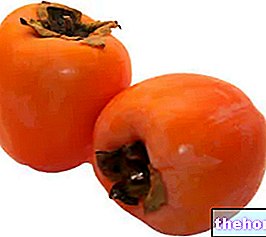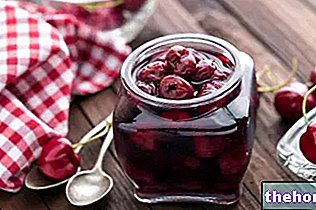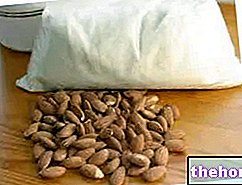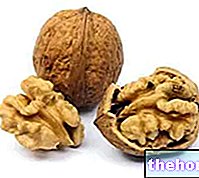Premise
Based on the context in which the term is used, the melon refers to both the plant and the fruit; known for its impressive size, orange color, sweet taste and freshness, melon, together with watermelon, has become the emblem of summer.
Origins and diffusion
The origin of the melon is still debated and uncertain: if many authors are convinced that this fruit comes from Asia, just as many consider Africa as its true country of origin. However, what is certain is that Asian countries - China in particular - are currently the world's largest producers of melon.
At the present time, the cultivation of melon is practically widespread all over the world: in our country as many as 23,000 hectares are destined for plantations of this fruit.

Botanical analysis of the melon
In botany, melon is better known as Cucumis melo, belonging to the Curcubitaceae family. It is an annual plant, whose main stem, generally creeping, can branch and therefore become a climber: in this case, the plant needs support.
The leaves of the melon plant are lobed, reniform and rounded, while the roots appear very developed both in depth and on the surface.
The fruit melon is a peponid with a fleshy orange-yellow pulp, juicy and very sweet: the fruit is clearly distinguishable for its imposing size and rather important weight (from 0.4 to 4 kg). The melon consists of a rather hard and massive peel (epicarp), a pulpy and juicy mesocarp (pulp), while inside the seeds are set in a rather spongy, fibrous and soft mass.
The seeds, very numerous, are soft, generally white and pointed only at one "end (drop shape) [taken from http://www.agraria.org/]
Varieties and types
First of all, a first distinction must be made between melons, according to food consumption: there are “fruit” melons and “vegetable” melons.
Clearly, melons intended as fruit are the best known, sweet, typically summer and harvested when fully ripe: in this category, in turn, reticulated (or netted, with white or yellowish pulp) melons are distinguished. inodorus (winter melon, with white or pink flesh and smooth skin) and cantaloupe melons (with smooth pericarp and typically orange flesh).
Among the “fruit” varieties, the yellow melons, easily distinguishable for the typically yellowish pulp and for the white and smooth pericarp.
The "vegetable" melons are harvested before ripening: there are bitter melons (group momordica), exploited for their medicinal properties, because they are a mine of antioxidant vitamins, and melons snake or tortarello, used in salads such as cucumbers.
Winter melon

Among the best known winter varieties, the giant of Naples, characterized by a thin and greenish skin, and a particularly sweet white pulp.
The Morettino melon, with dark green skin and whitish pulp.
The Malta melon instead it has a very particular green pulp.
Either way, summer melon lovers can somehow keep its load of flavor for the winter months by making melon jam at home.
Store the melons
Summer melons should be kept in the fridge, at a temperature not lower than 5 ° C: in fact, when it falls below this threshold, the fruit is affected, forming red spots on the pulp, responsible for its softening.
When the melon is not ripe, it is preferable to keep it at room temperature, in order to accelerate the ripening processes.
The quality of the melon can be recognized both to the touch and from the scent: to the touch, the melon must not be soft, as it could be acidic and unpleasant, while the strong and intense aroma is emanated from the peel and is a sign of fruit ripeness. .
Nutritional analysis
We now come to the most interesting part of the melon: the "nutritional analysis. As it is known, the melon is one of the sweetest and at the same time thirst-quenching fruits of all: sometimes, the sugar component exceeds 13%, (below 10 -11% sugar, melon is sometimes defined as poor quality).
The quantity of water contained in it often exceeds 90%; in the composition of the melon there is also a minimum quantity of fiber, proteins and fats (each found below 1%).
Despite the large amount of sugar, melon is a friendly food for low-calorie diets, thanks to its reduced caloric intake: 100 grams of food, in fact, provide only 33 kcal.
The melon is very rich in vitamins and mineral salts: among the vitamins we remember above all A (189mg / 100g of product), C (37mg / 100g of melon), PP (0.6mg / 100g of fruit) and traces of vitamins B1 and B2.
Melon is a source of potassium, calculated at around 333 mg per 100 grams of product; the quantity of phosphorus (13 mg / 100 g of melon), calcium and sodium (8 mg / 100 g of product) is also conspicuous.
Melon: properties
In the past, the consumption of melon was not recommended because the belief was in vogue that this fruit could "diminish the genital semen"; still, at the time, there were those who considered the melon a harmful fruit, accused of the death of some emperors.
Currently, the consumption of melons is not recommended only for diabetics and all people who complain of gastric disorders, such as acidity and digestive difficulties: certainly, melon is not harmful, nor does it diminish the genital semen!
Given the large amount of vitamins A and C, melon is one of the highly antioxidant foods: in this regard, it is recommended for suntan lovers, considering that the melon stimulates the production of melanin, promoting tanning and protecting the skin. from solar radiation.
It is also believed that melon plays an important role in enhancing vision (due to the presence of beta-carotene), as well as being an important aid in strengthening teeth and bones.
In popular medicine, melon is considered an excellent purifying, diuretic and refreshing; moreover, in the form of compresses, it is particularly suitable for treating burns and scalds (soothing properties).
Ham and melon
The typical, as well as very tasty, combination of ham and melon, in addition to making the melons more flavorful - so to speak - weak, represents an expedient to make them more digestible and less laxative (property due to the generous presence of fibers and simple sugars) .
In this video we offer you an exquisite (and beautiful) summer salad based on ham, melon and shrimps, because even the eye wants its part! First, however, make sure you acquire the right dexterity in the procedures of cleaning and cutting the melon .
Summer Salad with Ham, Melon and Prawns
Problems with playing the video? Reload the video from youtube.
- Go to the Video Page
- Go to the Video Recipes Section
- Watch the video on youtube
Melon in brief, Summary of the properties of melon "
Other Foods - Fruits Apricots Sour cherries Cashews Pineapple Watermelon Orange Avocado Banana Persimmon Persimmons Apple Chestnuts Cedar Cherries Coconut Watermelon Dates Feijoa Fig of India Figs Strawberries Berries Passion fruit (Maracujà, Granadilla) Jujube Kiwi Raspberries Coconut milk Lemons Almond milk Mango Apples Quinces Pomegranate Melon Blackberries Mustard Medlar Olives Taggiasca Olives Fermented Papaya Pears Peaches Plantains (Cooking Bananas) Pomelo Grapefruit Pink Grapefruit Plums, prunes Fruit juices and fruit juices Grape juice Plums Grapes Sultanas and Raisins OTHER ITEMS FRUIT Categories Food Alcoholics Meat Cereals and derivatives Sweeteners Sweets Offal Fruit Dried fruit Milk and derivatives Legumes Oils and fats Fish and fishery products Salami Spices Vegetables Health recipes Appetizers Bread, Pizza and Brioche First courses Second courses Vegetables and Salads Sweets and Desserts Ice cream and sorbets Syrups, liqueurs and grappas Prepare Basic tions ---- In the kitchen with leftovers Carnival recipes Christmas recipes Light diet recipes Women's, mom's and dad's day recipes Functional recipes International recipes Easter recipes Gluten-free recipes Diabetic recipes Holiday recipes Valentine's Day recipes Vegetarians Protein recipes Regional recipes Vegan recipes




























